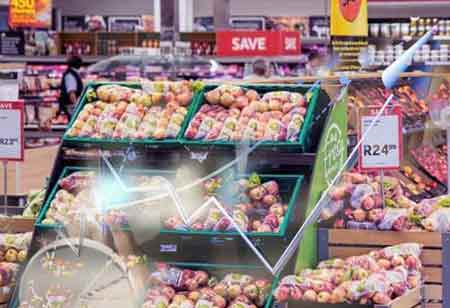Thank you for Subscribing to Food Business Review Weekly Brief
New Developments in Foodservice and Restaurants for 2023
The restaurant and food service businesses have had a difficult go of it over the past few years due to the COVID-19 pandemic,

By
Food Business Review | Monday, February 27, 2023
Stay ahead of the industry with exclusive feature stories on the top companies, expert insights and the latest news delivered straight to your inbox. Subscribe today.

Restaurants that simultaneously cook meat and vegetables can prepare orders fast, using fewer appliances and energy, leveraging new cooking technology.
FREMONT, CA: The restaurant and food service businesses have had a difficult go of it over the past few years due to the COVID-19 pandemic, inflation, supply chain problems, and a lack of qualified workers. The sector has many reasons to be optimistic about the future. More people dined out in restaurants and other establishments, thanks to many nations loosening health and safety regulations. New inventions and ideas percolating over the past few years may finally hit critical mass. Some of the following food service and restaurant trends may gain traction in 2023, and they can be found anywhere from casual dining and schools to quick service restaurants and stores.
Improved web experiences: Mobile-friendly design should be the first concern for attracting customers, as the app's user experience will deter users. Fast food chains adopt this approach. Restaurants are testing chatbots as screens on tables, or an app extension can assist in choosing what to eat, pairing food and drinks, presenting current promotions, and more. Offering a loyalty reward program on a mobile app simplifies the process of earning points and prizes when ordering and buying. The rewards program is app-based, and users earn points with each order. It also gives rewards program members special deals and ways to earn points. In 2023, any commercial food service venue can implement a loyalty program.
Delivery: Several inventions and technological breakthroughs simplify delivery and meet rising demand. Delivery and carry-out will reign as customers become accustomed to its convenience. In-house delivery reduces third-party commission fees, preserves brand identification, and requires employees and resources to process and distribute. Restaurants are considering a hybrid approach with enough team members. Pickup and carry-out innovations get leveraged by order pickup. PUC heating cabinets and other technologies allow consumers to pick hot, freshly made meals.
Experience dining: In 2023, dining will be the ultimate experience. Tasting menus are also known as "two-digit tasting menus," the concept offers a set menu of tapas-like small plates to sample a variety of finely-crafted foods. Tasting menus let chefs explore flavor profiles, proteins, veggies, desserts, and more. The outcome is a spectacular multi-course dinner of carefully made meals. The fixed-menu pricing and modest quantity reduce food waste and restaurant costs.
Innovative cooking technology: Induction cooking is a primary 2023 food service and restaurant trend. Induction cooktops use magnetic currents to heat pots and pans and cook food quickly. Operators can cook several things without heating the equipment or kitchen, keeping personnel safe and comfortable. Induction cooktops are excellent, but their high cost and incompatibility with some cookware turn others off. The technology will continue to grow in 2023, so look for it.
NFTs: Non-fungible tokens (NFTs) are blockchain records used as digital receipts. NFTs gained popularity in 2021 and were popular through 2022. Restaurants will discover additional methods to use NFTs in their business strategies in 2023. Some restaurants employ NFTs to gain exclusive menu items or recipes. Restaurants offer monthly coffee memberships. NFTs let the metaverse create immersive digital worlds. Restaurants can use NFTs to let customers hang out in virtual restaurants, and VR headsets enable this digitally.






